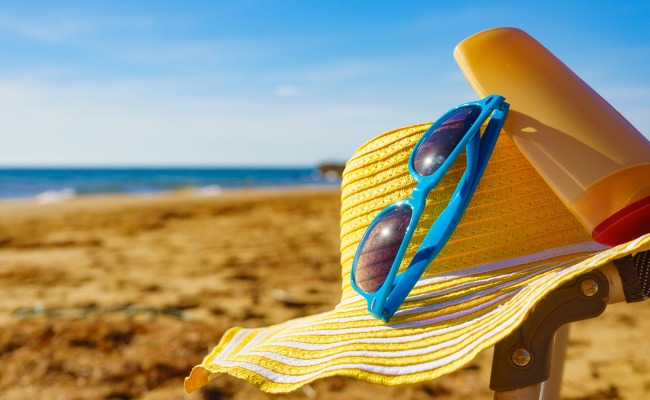As the days grow longer, and the warm rays of the sun call us outdoors, it’s important to remember that soaking up the sun requires some careful preparation. Sun safety should be a top priority for everyone, during every season, regardless of age or skin type. Sun exposure can cause sunburns, skin aging, eye damage, and skin cancer, which is the most common cancer in the United States. According to the Center for Disease Control and Prevention (CDC), about 6.1 million adults are treated for basal cell and squamous cell carcinomas each year; the two most common types of skin cancers. Follow these simple tips to enjoy the sunshine, while protecting your skin from harmful exposure.
- Apply Broad-Spectrum Sunscreen: Choose a sunscreen with a minimum SPF of 15 and ensure it provides broad-spectrum protection against both UVA and UVB rays. Apply it generously to all exposed skin, including often overlooked areas like ears, neck, and the back of your hands. Reapply every two hours or more frequently if sweating or swimming, and read the label to ensure you are using it correctly.
- Seek Shade: Limit your time in the sun, especially between 10:00 a.m. and 2:00 p.m., when the sun’s rays are most intense. Carry a wide-brimmed hat and use umbrellas or canopies to create shade when enjoying outdoor activities.
- Wear Protective Clothing: Opt for lightweight, long-sleeved shirts, long pants, and skirts made from sun-protective materials. These clothes provide an extra layer of defense against the sun’s rays.
- Wear Sunglasses: Don’t forget to wear UV-blocking sunglasses to protect your eyes and the delicate skin around them. Select sunglasses with a UV400 rating or “100% UV protection” on the label. These sunglasses provide the most protection against UV rays and block more than 99% of UVA and UVB radiation.
- Stay Hydrated: Hydration is crucial when spending time under the sun. Drink plenty of water throughout the day to prevent dehydration. Remember, even if you don’t feel thirsty, your body still needs hydration to function optimally.
- Be Mindful of Reflective Surfaces: Sand, water, and snow can reflect UV rays, increasing your exposure. Take extra precautions when near these surfaces by applying sunscreen more frequently and wearing protective gear like rash guards or wetsuits for water activities.
- Monitor Your Skin and Speak to Your Provider: If you take medications, ask your healthcare provider about sun-care precautions because some medications may increase sun sensitivity. Keep an eye on any changes in your skin, such as new moles, growths, or changes in color, size, or shape of existing moles. Early detection is crucial in the fight against skin cancer, so if you notice anything unusual, promptly contact your provider.
Remember, sun safety is a year-round commitment. Even on cloudy days, harmful UV rays can penetrate through the clouds and impact your skin health. By adopting these sun safety tips, you can enjoy the outdoors while safeguarding yourself from the sun’s damaging effects.


